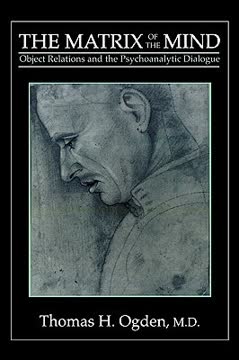Key Takeaways
1. The Psychoanalytic Dialogue: An Evolving Interpretation of Mind
Psychoanalysis, both as a therapeutic process and as a set of ideas, develops in the form of a discourse between subjects, each interpreting his own productions and those of the other.
Dynamic theoretical evolution. Psychoanalytic theory is not a static collection of pronouncements but a living, evolving discourse. Each significant contribution, like those from Melanie Klein or Donald Winnicott, resolves existing problems while simultaneously creating new epistemological dilemmas, transforming the field rather than simply adding to it. This continuous re-interpretation safeguards the richness of human discourse and prevents self-alienation in thinking.
History as active creation. Understanding this discourse means recognizing that history is not merely a collection of past events, but an active creation reflecting our conscious and unconscious memories, distortions, and interpretations. Isolating ourselves from this historical dialogue diminishes our capacity for self-reflection and understanding, making us less alive to our own symbolic creations and evolving identities. The goal of analysis, therefore, is to progressively recapture self-alienated experience, allowing for a fuller, more engaged dialogue with oneself and others.
Beyond replication. The aim is not to historically reconstruct or replicate the thinking of past analysts, as their moment in the dialogue has passed. Instead, the focus is on using their contributions as a springboard for generating new analytic understandings and interpretations in the present. This approach allows for a deeper engagement with foundational ideas, recognizing that even Freud's work contained more meaning than he himself recognized, and that later contributions, like Klein's, can illuminate earlier ones.
2. Klein's Phantasy and Instinct: Inborn Codes for Meaning-Making
Phantasy for Klein (1952a) is the psychic representation of instinct.
Instinct as deep structure. Melanie Klein's concept of phantasy is central, viewing it as the mind's transformation of biological instincts into psychic phenomena with specific contents. This isn't about inherited thoughts, but rather inborn "psychological deep structures"—analogous to Chomsky's linguistic deep structure—which are organizing codes that predispose the infant to interpret experience in highly determined ways. These codes, associated with life and death instincts, shape how perceptions are organized and meanings are attached.
Preconception meets realization. The infant isn't born with pre-formed ideas like "tearing the breast to bits," but with a powerful predisposition to organize sensory data along specific lines. This "knowledge" is inherent in bodily impulses, guiding the infant to link a "preconception" (potential for an idea) with its "realization" (actual experience). For example, the preconception of danger, linked to the death instinct, finds its realization in frustrating experiences, confirming the infant's anticipation of danger rather than creating it anew.
Beyond Freud's sexuality. Klein extends Freud's radical idea that instincts serve as a "Rosetta stone" for meaning-making, applying it to preoedipal experience. Freud proposed that all human experience could be understood through sexual meanings, with the Oedipus complex as a universal organizing principle. Klein similarly posits that inborn codes, reflecting life and death instincts, provide universal constellations of meanings, particularly for oral, anal, and early phallic developmental levels, shaping the infant's earliest interpretations of the world.
3. The Paranoid-Schizoid Position: Self as Object and the Power of Splitting
The paranoid-schizoid position is a phase of development wherein the self exists predominantly as object.
"It-ness" of early experience. Klein conceptualizes the paranoid-schizoid position as the infant's first psychological foothold, a state of "it-ness" where experience is impersonal and non-reflective. Thoughts and feelings simply "happen" to the infant; there is no subjective "I" interpreting them. This is a psychology without a subject, where the self is an object acted upon, not an author of experience.
Splitting as primary defense. The core mechanism for managing danger, particularly from the death instinct, is splitting. This is a biologically determined, automatic attempt to achieve safety by separating endangering from endangered aspects of self and object. It creates a binomial ordering of experience—pleasure/unpleasure, danger/safety, love/hate—and prevents overwhelming anxiety by keeping contradictory feelings and perceptions mutually isolated.
- Projection: Removing internal danger by locating it outside.
- Introjection: Protecting a valued object by locating it within.
- Denial: Treating a dangerous object as annihilated.
Discontinuity of history. In this position, the predominant mode of symbolization is "symbolic equation," where the symbol is what it represents, with no mediating interpreting self. This leads to a fragmented, discontinuous experience of self and object, where the past is constantly rewritten to align with the present emotional state. A "good" therapist and a "bad" therapist are entirely different people, and previous shared history is negated, creating a static, timeless present.
4. The Depressive Position: Birth of the Subject and the Weight of History
When the infant becomes capable of feeling concern for another as a whole and separate person, i.e., a living human being, he then becomes capable of guilt and the wish to make reparations.
Emergence of "I-ness." The depressive position marks a monumental psychological advance, a transition from impersonal experience to subjectivity. This involves the differentiation of symbol and symbolized, creating a space for an "I" to emerge as the interpreter of perceptions. For the first time, experience becomes a personal creation, and the infant can project this subjectivity onto others, recognizing them as whole, separate beings capable of their own feelings and thoughts.
Guilt, concern, and reparation. With the birth of the subjective self comes the capacity for concern, guilt, and the wish to make reparations for harm done (in reality or fantasy). Unlike the paranoid-schizoid position where objects are impersonal and can be magically re-created, the depressive position acknowledges the object as immutable and separate. This means one cannot simply negate or rewrite history; one is "stuck" with the fact of having caused harm, leading to genuine sadness and the desire to make amends.
The historical self. This position introduces the "historical self," where the past is preserved in subjective memory rather than constantly rewritten. Loss of a loved, separate object evokes feelings of sadness, loneliness, and mourning, which are distinct from the fear of "nihilation" in the paranoid-schizoid state. The Oedipus complex, understood within this depressive context, involves conflicts of subjective desire and the renunciation of incestuous/parricidal wishes, leading to the formation of a superego based on identification and reparation, rather than primitive fear.
5. Projective Identification: Interpersonal Creation and Transformation of Experience
Projective identification allows for an exit from the initially closed system of the infant’s psychic reality.
Beyond internal systems. While Klein initially viewed projective identification primarily as an intrapsychic defense, it is also a crucial interpersonal process that enables the infant to break free from the closed system of his preconceptions. It's a vehicle for moving from the paranoid-schizoid to the depressive position, allowing the infant to learn from experience by modifying instinctual biases.
Mother as container. In its early form, the infant projects "beta elements" (raw, un-meaningful sensory data) into the mother. The mother, through her "containment" (processing and transforming these elements), converts them into "alpha elements" (meaningful experience), which the infant can then re-internalize. This interpersonal process creates meaning that the infant alone could not generate, fostering a qualitative shift in the infant's receptivity and meaning-making system.
Coercion and transformation. More mature forms involve a fantasy of expelling split-off internal contents and controlling another person from within. The projector exerts interpersonal pressure on the "recipient" (e.g., the therapist) to experience and behave congruently with this unconscious fantasy. When successfully managed, the recipient makes a modified, more integrable version of the previously unmanageable feelings available to the projector, fostering psychological growth and a move beyond the projector's isolated internal world.
6. Winnicott's Mother-Infant Unit: The Invisible Holding Environment
The behaviour of the environment is part of the individual’s own personal development.
"No such thing as an infant." Winnicott profoundly shifted the focus from the infant as a distinct psychological entity to the "mother-infant" as the fundamental unit of psychological development. The mother's role in the early months is to provide a "holding environment" that postpones psychological separateness, allowing the infant to develop within a protective, unobtrusive envelope. This means the mother's presence is so perfectly attuned that it is "unnoticed," creating an "invisible oneness" where the infant doesn't even recognize needs as needs, let alone desire.
Mother as psychological matrix. The mother provides the initial psychological matrix—the mental space—in which the infant's mental contents exist and experience begins to be generated. This matrix is not merely a background but an active, interpenetrating force with the infant's biological matrix. The mother's "primary maternal preoccupation" involves her losing herself in the infant's place, becoming part of this new psychological compound, ensuring that the infant is not experienced as a foreign object.
Paradox of development. While the mother must initially shield the infant from awareness of desire and separateness, she must also, paradoxically, allow for "dosed frustration" and tolerable anxiety. This controlled impingement is essential for the infant to develop desire and, consequently, internal differentiation. Without it, the infant is "fobbed off" and robbed of "zest," hindering the development of self-generated desire and the capacity for psychological defenses.
7. Potential Space: The Dialectical Realm of Imagination and Subjectivity
The essential feature [of this area of experiencing in general and the transitional object in particular] is . . . the paradox and the acceptance of the paradox: the baby creates the object, but the object was there waiting to be created.
Intermediate area of experience. Potential space is Winnicott's most elusive yet crucial concept, referring to an intermediate area between inner psychic reality and external reality. It's the space where playing, creativity, transitional phenomena, and cultural experience occur. This space is neither purely internal nor purely external; it's a dynamic realm where the paradox of "me-extensions and not-me" is accepted without resolution.
Dialectics of being. This space is generated by a "psychological dialectical process," where opposing concepts—like fantasy and reality, oneness and separateness, me and not-me—create, inform, preserve, and negate each other. This dynamic tension is crucial for the emergence of subjectivity, the subtle sense of "I-ness" that allows one to experience thoughts and feelings as one's own, rather than as mere reflexive reactions. The differentiation of symbol, symbolized, and interpreting subject creates this "threeness," making creativity and personal meaning possible.
Transitional objects as paradox. The transitional object perfectly embodies this paradox: it is both created by the infant (an omnipotent extension of self) and discovered (an object outside omnipotent control). It symbolizes the infant's capacity to be alone in the presence of the mother—the mother is absent as an object but present as the unnoticed, containing environment. This allows the infant to appropriate the psychological matrix, developing the ability to generate his own internal space for living, dreaming, and playing.
8. Psychopathology as the Collapse of Dialectical Space
In the absence of potential space, there is only fantasy; within potential space imagination can develop.
Breakdown of dialectics. The capacity to create and maintain potential space, a realm of psychological dialectics, is fundamental for healthy development. When this capacity fails or is severely limited, various forms of psychopathology emerge, reflecting a collapse or restriction of the dynamic interplay between opposing poles of experience. This leads to distortions in symbolization and a foreclosure of imagination.
Forms of collapse:
- Reality subsumed by fantasy: The dialectic collapses towards fantasy, where fantasy becomes indistinguishable from reality. Hallucinations are not like voices, they are voices. This leads to delusional transference and a world of "things in themselves," where understanding is impossible because there's no space for layered meanings.
- Reality as defense against fantasy: The dialectic collapses towards reality, used defensively to foreclose imagination. The individual becomes overly literal, unable to play or engage with symbolic meanings, draining vitality from fantasy. Dreams are dismissed as "senseless," and observations are stripped of personal significance.
- Dissociation of reality and fantasy: In conditions like fetishism, reality and fantasy are dissociated to avoid specific meanings (e.g., women lacking penises). This "splitting of the ego" prevents the two poles from informing each other, creating a static coexistence rather than a dynamic dialectic.
- Foreclosure of meaning: The most extreme failure, where neither reality nor fantasy is created. This "state of nonexperience" is a superordinate defense against overwhelming pain, where perception remains raw sensory data without attributed meaning, leading to emotional equivalence and a profound psychological deadness.
Imprisonment in the literal. In these pathological states, the individual becomes imprisoned in the realm of the "thing in itself," where symbols are indistinguishable from what they represent. This eliminates the mediating role of the interpreting subject, making personal meaning, curiosity, and genuine understanding impossible. The spontaneous, playful exploration of ideas gives way to compulsive action or a barren, unreflective existence.
9. Dream and Analytic Space: Arenas for Symbolic Transformation
Dreaming is the process of bringing the dream presentation into a dialectical process, thereby creating the dream experience, i.e., creating meaningful experience where there had only been static coexistence of bits of data.
Dreaming as symbolic transformation. Dreaming is an internal communication where a primary process "dream presentation" (a sensory event, a "thing in itself") is transformed within "dream space" into meaningful "dream experience." This transformation involves bringing the static coexistence of opposites in primary process thinking into a dialectical relationship, generating symbolic meanings. Without this dialectical process, the dream presentation remains raw data or devolves into a hallucination, indistinguishable from waking reality for the schizophrenic.
Analytic space as potential space. The "analytic space" is an intersubjective potential space co-created by patient and therapist, where analytic experience and personal meanings are generated and explored. It's a "play area" where fantasy and reality exist in a dialectical relationship, allowing for mature transference (illusion experienced as both real and not real). The therapist's role is to maintain this space, enabling the patient to "play with" ideas and feelings, fostering curiosity and understanding.
Threats to analytic space. Projective identification, as "direct communication," collapses analytic space by coercing the therapist into a fixed emotional state, undermining their capacity for a psychological dialectic. Similarly, therapist interventions that present "statements of fact" rather than inquiring into the patient's symbolic constructions erode this space, foreclosing the realm of personal meanings. The goal is to "pry open" the space between symbol and symbolized, allowing for the creation of subjective meaning and freedom from the "opaque inevitability" of uninterpreted experience.
Last updated:
Review Summary
The Matrix of the Mind receives high praise from readers, with an average rating of 4.37 out of 5. Reviewers appreciate Ogden's clear explanations of object-relations theory and its development from Klein to Winnicott. The book is noted for its insightful examples from clinical practice, particularly regarding schizophrenia and severe disorders. Readers find it helpful in understanding Winnicottian theory, especially concerning object relations and potential space. While some consider it brilliant and potentially groundbreaking for psychotic disorders, others warn that prior knowledge of psychoanalysis is beneficial for full comprehension.
Similar Books

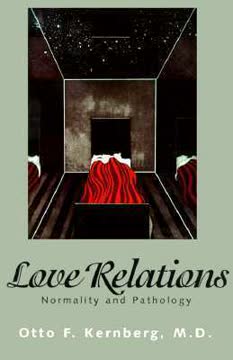


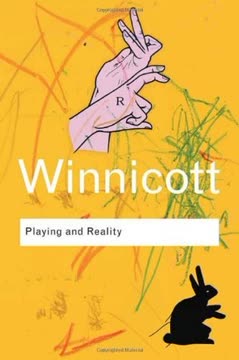

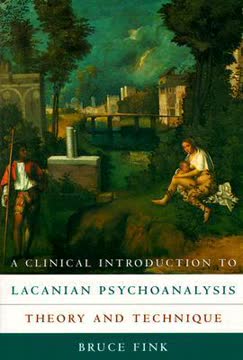

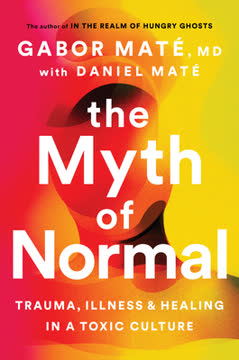
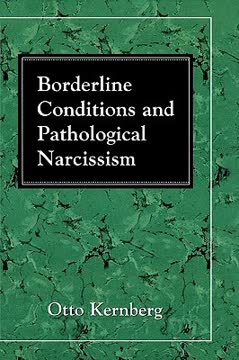
Download PDF
Download EPUB
.epub digital book format is ideal for reading ebooks on phones, tablets, and e-readers.
